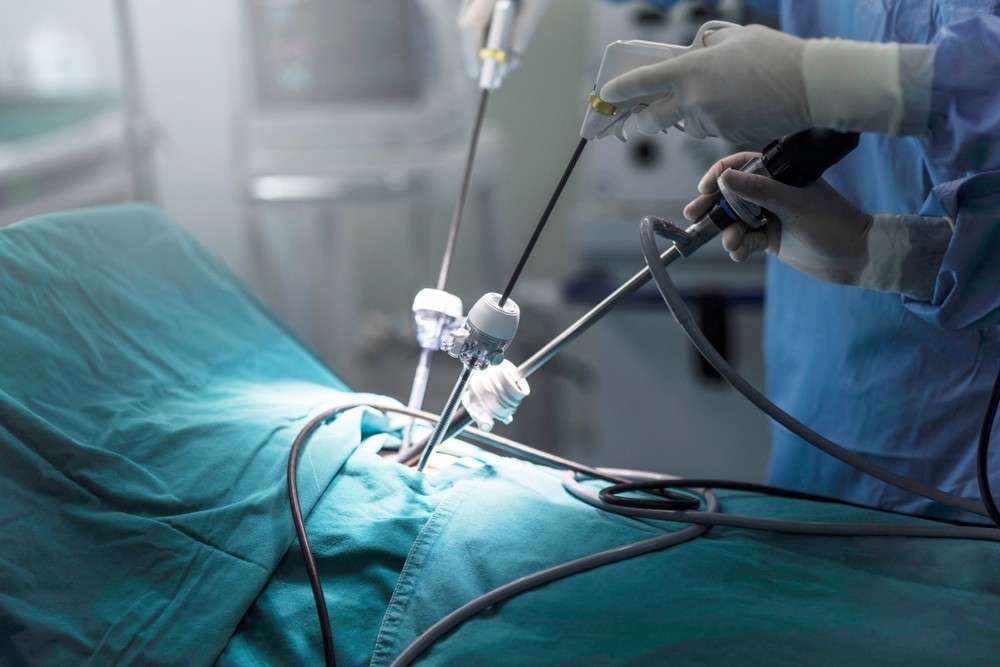Neurospine Hospital & Revive Critical Care
MINIMAL INVASIVE NEUROSURGERY?
Minimally Invasive Neurosurgery describes any procedure that is less invasive than an open surgery used for the same purpose, and is redefining the field of surgery. Minimally invasive surgery (MIS) procedures usually involve laparoscopic devices and remote-controlled manipulation of surgical instruments with observation of the surgical field through a scope, either micro or endo.
In traditional open neurosurgeries, surgeons need to make large incisions in order to operate and access the area of concern. With MIS, surgeons can make just a few small holes or openings, usually no more than ½ inch each, and use sophisticated video equipment to perform the operation.

In general, the goal of minimally invasive spine (MIS) surgery is to stabilize the vertebral bones and spinal joints and/or relieve pressure being applied to the spinal nerves — often a result of conditions such as spinal instability, bone spurs, herniated discs, scoliosis or spinal tumors.
As opposed to open spine surgery, minimally invasive surgical approaches can be faster, safer and require less recovery time. Because of the reduced trauma to the muscles and soft tissues (compared to open procedures), the potential benefits are:
- Better cosmetic results from smaller skin incisions (sometimes as small as several millimeters)
- Less blood loss from surgery
- Reduced risk of muscle damage, since less or no cutting of the muscle is required
- Reduced risk of infection and postoperative pain
- Faster recovery from surgery and less rehabilitation required
- Diminished reliance on pain medications after surgery
Conditions Treated Using MIS Procedures
- Degenerative disc disease
- Herniated disc
- Lumbar spinal stenosis
- Spinal deformities such as scoliosis
- Spinal infections
- Spinal instability including spondylolisthesis
- Vertebral compression fractures
- Spinal tumors
Benefits of Minimally Invasive Neurosurgery
Most often, MIS procedures cause less operative trauma for the patient and the surgical site. It also causes less post-operative pain and scarring, can help speed up a patient’s recovery and reduces the presence of post-surgical complications.
1. LESS PAINLESS
Minimally invasive neurosurgeries are proven to cause less post-operative pain and discomfort and patients report decreased usage of post-operative pain relievers
2. SHORTENED HOSPITAL STAY
Patients who have a surgery that is considered minimally invasive experience less trauma to the surgical area, which means they can return to normal activity and leave the hospital sooner.
3. SMALL INCISION
Because of the small incision needed by MIS, there is decreased risk of incisional infection and patients are left with much smaller scars than with traditional open neurosurgery.
4. MUSCLE SPARING
In spinal surgeries, MIS techniques allow the muscle to be retracted or pulled to the side instead of cut through to reach the operative site. This sparing of the muscle tissue allows patient to recover much quicker and experience far less pain post-operatively.
5. ACCURACY
The video-assisted equipment techniques used in MIS provide a surgeon with better visualization and magnification of the brain and spine during surgery. This translates into more accurate and effective procedures.
Precaution After Minimally Invasive Neurosurgery
The diagnosis of growths or abnormalities that may require skull base surgery is based on your symptoms and a physical exam. Because this area can’t be seen directly, these exams and imaging studies are important parts of the diagnosis:
- Brain imaging studies: Special tests to create pictures of the skull. This helps your medical team see a growth or abnormality. These tests include MRI, MRA (magnetic resonance angiogram), PET (positron emission tomography) and CT scans.
- Biopsy: A small piece of a growth in the skull base may be taken out and looked at under a microscope. A biopsy may be done using an endoscope placed through the nose and sinuses. Biopsies may also be done by fine need aspiration or excisional biopsy.
- Other tests: Your balance, cranial nerves, muscle activity, vision, hearing, and hormonal levels may all be checked. Studies or scans of other areas and body systems may also be checked.

